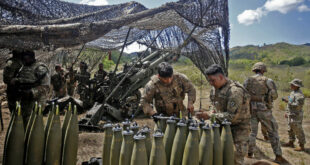International students are particularly vulnerable to housing and affordability issues, advocates say.

Canada, widely considered one of the top countries to study in and immigrate to, is currently welcoming more international students than at any point in its history. But that’s quickly becoming divisive as the country faces challenges related to housing and overall affordability.
Experts say that although international students are particularly vulnerable to these problems, they’re increasingly being blamed for worsening them and could face a cap on their entry into Canada as a result.
But how exactly did we get here? Here’s a look at how international students became a key policy point for Canada.
From post-war welcome to tuition deregulation
Dale M. McCartney, is an assistant professor specializing in international student policy at the University of the Fraser Valley in B.C. He says Canada gradually opened its doors to international students, starting not long after the Second World War.
Back then, international students were part of Canada’s broader foreign affairs agenda, and McCartney says the government believed that when they returned to their home countries, they could positively impact trade and global relations.
While that notion still exists, McCartney says things changed in the 1980s when provinces began to deregulate international student tuition, leaving it up to post-secondary institutions to control their own rates. At the same time, the federal government was cutting corporate tax rates to convince businesses to come to the country.
All of this meant that over time, public funding for post-secondary education decreased.
“They created a situation where institutions were interested in attracting international students for primarily economic reasons,” said McCartney.

Canada considers limiting international students over housing crunch
With Canada facing an acute shortage of affordable housing, the federal government is considering putting a limit on the number of international students it allows in each year.
In the early 2000s, a series of changes in immigration policy signalled the federal government’s interest in getting international students to stay and work here after graduation, said McCartney. This included the introduction of off-campus work permits and the creation of a new permanent residence stream that factored in Canadian education and work experience.
Canada hosted more than 800,000 international students last year, according to the government’s figures. To sustain their studies here, McCartney says many international students pick up low-paying jobs that are difficult to fill with Canadian workers.
This shift has left the students vulnerable to policies that overshadow the innovation, culture and talent they bring to Canada, according to Melody Viczko, the past president of professional advocacy body the Comparative and International Education Society of Canada.
“When we only value international students for their contribution economically, we’re failing to see all the other ways … they contribute to the learning that happens in post-secondary education,” said Viczko.
A plan to increase students, but not resources
In 2014, the federal government released the International Education Strategy plan, its first major venture into education policy, which is a responsibility usually overseen by provinces and territories.
There were 239,131 international students in 2011. In its 2014 plan, the government said it aimed to more than double that number by the end of the decade, as well as increase the number of students who would become permanent residents after graduation.
According to data from Immigration, Refugees and Citizenship Canada (IRCC), that goal was smashed in just four years, with 721,205 international students in Canada in 2018.
The federal government estimates that international students contributed $21.6 billion to Canada’s GDP in 2018 — more than the export of auto parts, lumber or aircraft.

Oversight needed to prevent exploitation of international students
The path to an education in Canada for international students from India can be riddled with roadblocks — from education agents resorting to shady tactics to questionable recruiting practices at private colleges. Advocates want more oversight in both countries to prevent students from being exploited during the process.
Isaac Garcia-Sitton, the executive director of international student enrolment, education and inclusion at Toronto Metropolitan University, says the rise in international students didn’t come with a “proportionate increase” in resources or requirements.
He also noted there were no steps taken to insure that the institutions recruiting and enrolling international students were equipped to support them, despite the fact that they typically pay higher tuition than domestic students.
According to Garcia-Sitton, this is partly why international students say they are struggling to find housing and feeling misled about what life would be like in Canada, and even why some colleges are revoking admissions.
“Canada’s established policies, systems and processes are not strategic in scope and lack an emphasis on student well-being — favouring the recruitment of international students but not necessarily their transition or settlement once they arrive,” Garcia-Sitton told CBC News in an email.
“This ultimately has substantial effects on cities and communities, particularly in Ontario, British Columbia, and Quebec, that host about 80 per cent of these students, and have been experiencing pressure on local resources with increasing costs and housing insecurity.”
He says this is especially true for the rising number of private colleges and university-college partnerships, which often lack the infrastructure and staff to deliver academic programming.
Some post-secondary institutions have been criticized for predatory recruitment practices, and dozens of students have been threatened with deportation after being given fake admission letters as part of a suspected immigration scam.
How these policies affect international students
Binny Joseph, who immigrated to Canada as an international student in 2008, is the co-founder and director of the International Student Services Organization, a non-profit based in Ottawa. He says many problems facing international students today — ranging from having a hard time integrating into Canadian society to struggling to find housing — are nothing new.
“Fourteen years later, the same issues are faced by international students, but now it’s in a large scale,” he said, noting that the stress of these problems can lead students to take longer to finish their programs, or drop out entirely.
He says demand for his organization’s support and integration services have increased over the years — a challenging feat as they rely on volunteers to deliver their programs.

It’s something student organizations are seeing on the ground as well, particularly as the housing crisis persists, says Natalia Tola, the national deputy chair for the Canadian Federation of Students. She immigrated to Halifax from Ecuador and graduated with a journalism degree this year.
“We come seeking a better life and sometimes we have to live in closets,” said Tola, noting that many international students are coming here to escape war-torn countries and third-world economies.
“Are we truly the problem?”
Housing, immigration ministers plan to work together
Housing Minister Sean Fraser — who was the immigration minister until last month’s cabinet shuffle — said this week that he plans to sit down with post-secondary institutions to figure out what can be done to make it easier to find students living spaces in tight rental markets.
He also took aim at institutions accused of taking in more students than they can support, saying “separating the wheat from the chaff” is going to be a big focus of the work he does with Immigration Minister Marc Miller.
Meanwhile, post-secondary institutions have said they’ve advocated for dedicated funding to help them build more housing.
Experts like McCartney say governments can re-evaluate how they fund public education, for example, by reconsidering low corporate tax rates.
But until international students are invited to the table, Tola says there can be no meaningful change.
“Will the government provide those resources to students, or will students continue having to … shout at the government from the top of a roof that we need these things and we are not a commodity?”
ABOUT THE AUTHOR
Vanessa Balintec is a reporter for CBC Toronto who likes writing stories about labour, equity and community. She previously worked for stations in New Brunswick and Kitchener-Waterloo. You can reach her at vanessa.balintec@cbc.ca and on Twitter at @vanessabalintec.
*****
Credit belongs to : www.cbc.ca
 Atin Ito First Filipino Community Newspaper in Ontario
Atin Ito First Filipino Community Newspaper in Ontario






